Project Management Life Cycle: The 5 Phases Explained

Projects rarely succeed when treated as a rigid sequence of steps. In reality, high-performing teams treat each phase as a checkpoint, carrying forward insights, adapting to context, and staying responsive to change.
This article breaks down the five key phases of the modern project life cycle: initiation, planning, execution, monitoring, and closure. More importantly, it explores how today’s best teams treat the life cycle as a living system, one that gets smarter with every project.
You’ll also see how tools like Meegle support this mindset with features that enable visibility, collaboration, and intelligent decision-making at every stage.
What is a project management life cycle
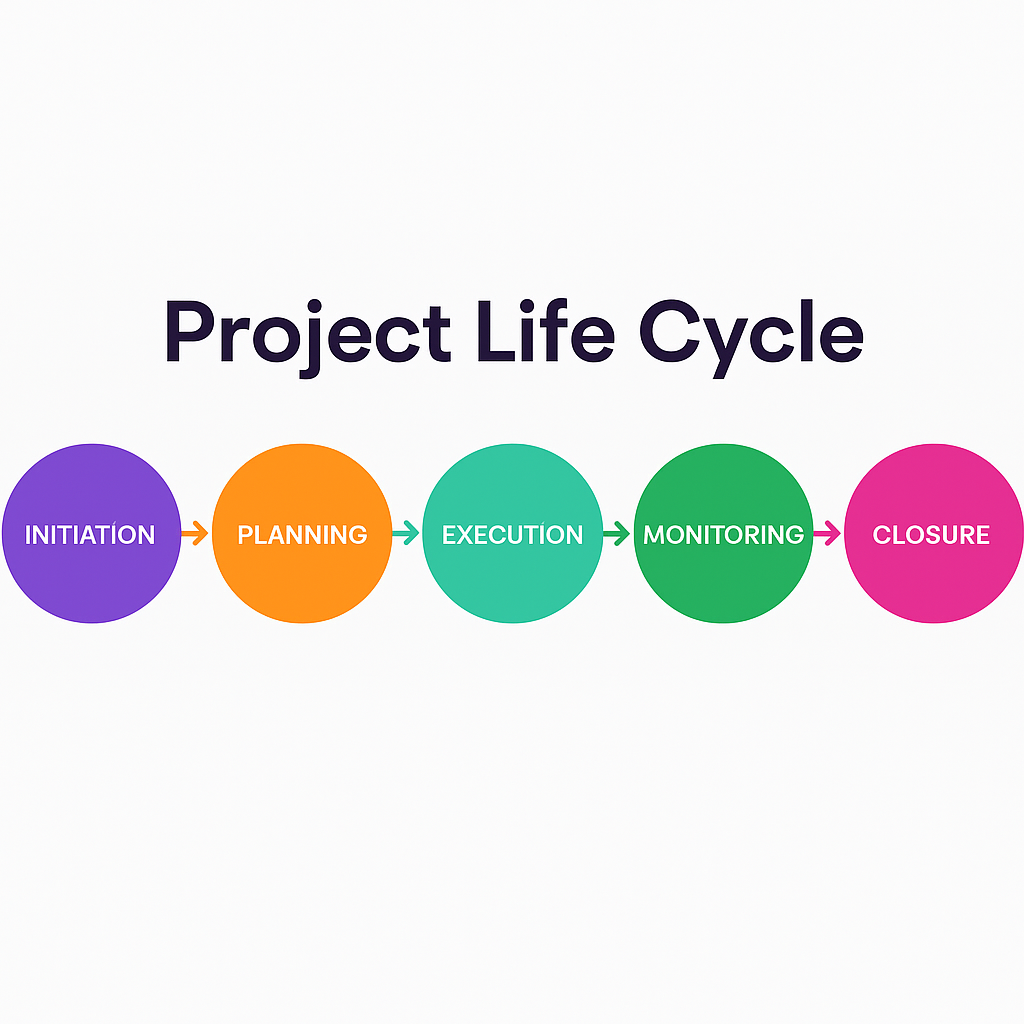 Project lifecycle - 5 phases of a project
Project lifecycle - 5 phases of a projectThe project management life cycle is a basic framework that comprises progressive, milestone-based phases required for project teams to effectively guide work from uncertainty to delivery.
What is a project?
A project is a temporary endeavor undertaken to create a unique product, service, or result. It has a defined beginning and end, specific objectives, and constraints such as time, budget, and resources.
Projects are distinct from ongoing operations and are designed to achieve specific goals within a set timeframe.
What is project management?
Project management is the applied discipline of directing temporary, goal-driven efforts through structured control and oversight. A lifecycle is not separate from project management, but it works as its delivery mechanism.
The lifecycle framework typically includes five universal project phases:
- Initiation – Defining the problem and justifying the project
- Planning – Structuring the work to meet strategic intent
- Execution – Mobilizing resources and managing outputs
- Monitoring and Control – Tracking against targets, mitigating risks
- Closure – Finalizing deliverables and embedding learning
This framework is not locked to any one industry. Whether you are building infrastructure in construction, launching a feature in SaaS, or running a multi-channel campaign in marketing, the lifecycle remains the same. Why? Because projects are fundamentally the same: finite, goal-oriented, and subject to constraints.
The terminology may vary; Agile calls it Sprints, Waterfall calls it Phases, but the flow stays consistent: begin, plan, act, monitor and close. The strength of the project management lifecycle lies in this adaptability. It offers a generic blueprint that can be made radically specific to match the shape of work.
Why is project management life cycle important
When a system becomes too complex to understand at a glance, you break it into subsystems. This phase-based thinking allows you to test assumptions within each subsystem in controlled units. This is why having a project lifecycle is important.
It is also beneficial for:
- Improved communication: Defined project phases and checkpoints create a shared timeline, reducing ambiguity and keeping stakeholders aligned on progress and expectations.
- Proactive risk management: Each phase serves as a review layer, enabling early detection and mitigation of risks before they escalate.
- Smarter resource allocation: Clear task breakdowns and timelines help assign the right people and materials at the right time, minimizing idle capacity and overload.
- Sharper project focus: Lifecycle stages force early clarity on goals, scope, and success criteria, preventing drift and misinterpretation down the line.
- Trackable performance: Milestones and metrics built into each project phase enable course correction before small delays turn into major blockers.
- Embedded quality control: With quality checks scoped into every phase, deliverables are continuously validated and not retroactively repaired.
Understanding the 5 phases of the project lifecycle
Here’s a breakdown of all five phases of a project management lifecycle and how you can manage each one:
Project phase 1: Initiation (Set the stakes and define the why)
This phase defines what problem is worth solving. Here, you interrogate intent and make sure the problem-solution isn’t poorly framed or politically misread to avoid any bottlenecks downstream.
To nail this initiation phase of the project’s lifecycle, you should:
Clarify the problem’s context and impact
Before you allocate resources or build roadmaps, strip the problem down by answering these questions:
- What’s the real problem - is it strategic, operational, or political?
- Who’s impacted - positively or negatively?
- Why now - what’s the business urgency?
- What happens - if we don’t solve it?
Pro tip: Don’t accept surface-level requests. Push the stakeholder until they give you a business consequence. “We need a new dashboard” is noise. “We’re losing 30 hours a month reconciling spreadsheets” would be the appropriate signal.
Mistakes to avoid: The failure pattern here is common - PMs rush into planning without proper feasibility checks and end up with wrong assumptions that become project blockers later.
Draft a project charter that aligns everyone
This is your first artifact of truth, so it doesn’t need to be fancy, but very clear.
A solid project charter typically includes:
- Business case – Why this is worth doing (ROI, risk mitigation, competitive pressure)
- Objectives – Framed as SMART goals (no vague “success” terms)
- High-level requirements – What’s in scope, and equally important, what’s not
- Success metrics – Time, cost, outcome-based measures
- Stakeholder map – Who approves, who supports, who blocks
- Constraints & assumptions – What you’re betting on, and what’s unchangeable
- Project sponsor and team – Named individuals with clear roles
Meegle provides ready-to-use:
- Stakeholder Governance Charter templates for PMs to plug in roles, approvals, deliverables, and communication rules, all structured within your workspace for immediate visibility.
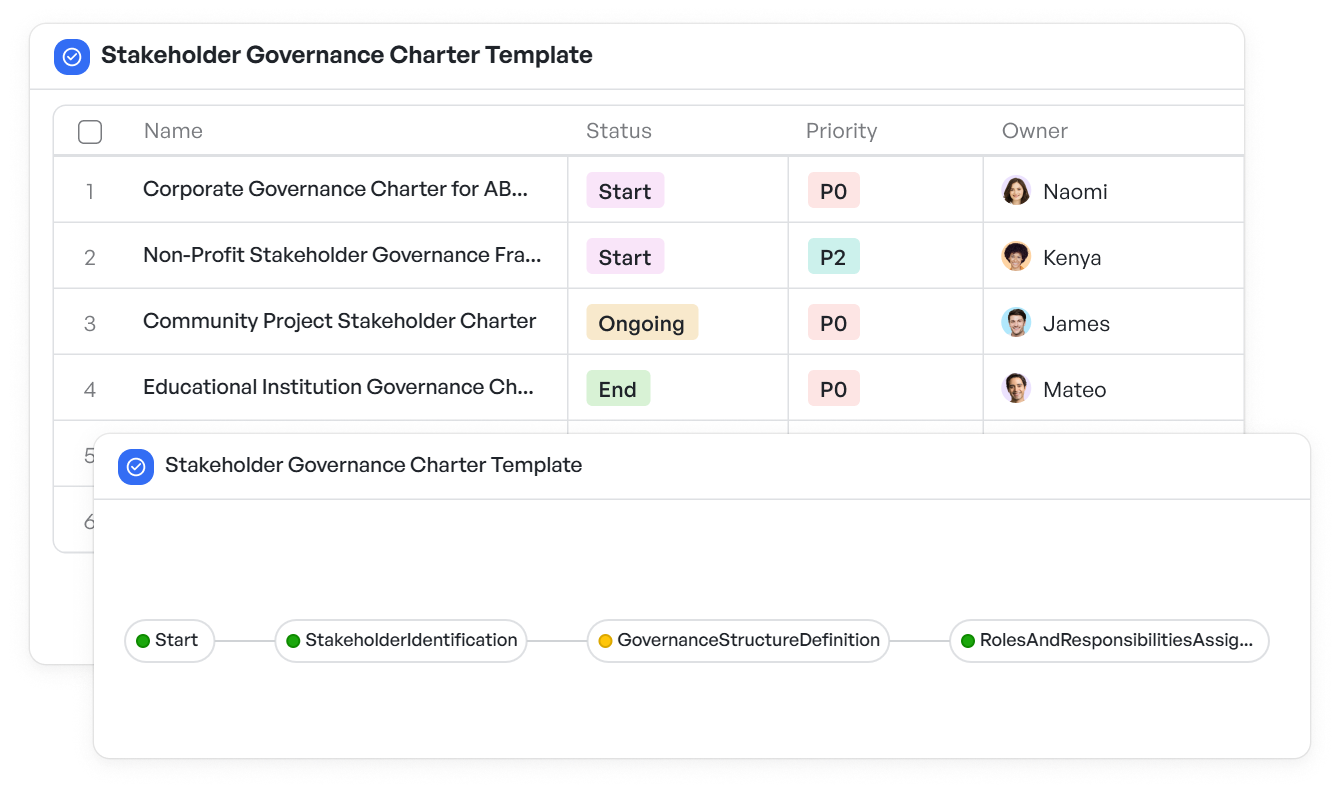 Meegle stakeholder governance charter template
Meegle stakeholder governance charter template- Integration Stakeholder Map template to help visualize influence and dependencies in your charter environment.
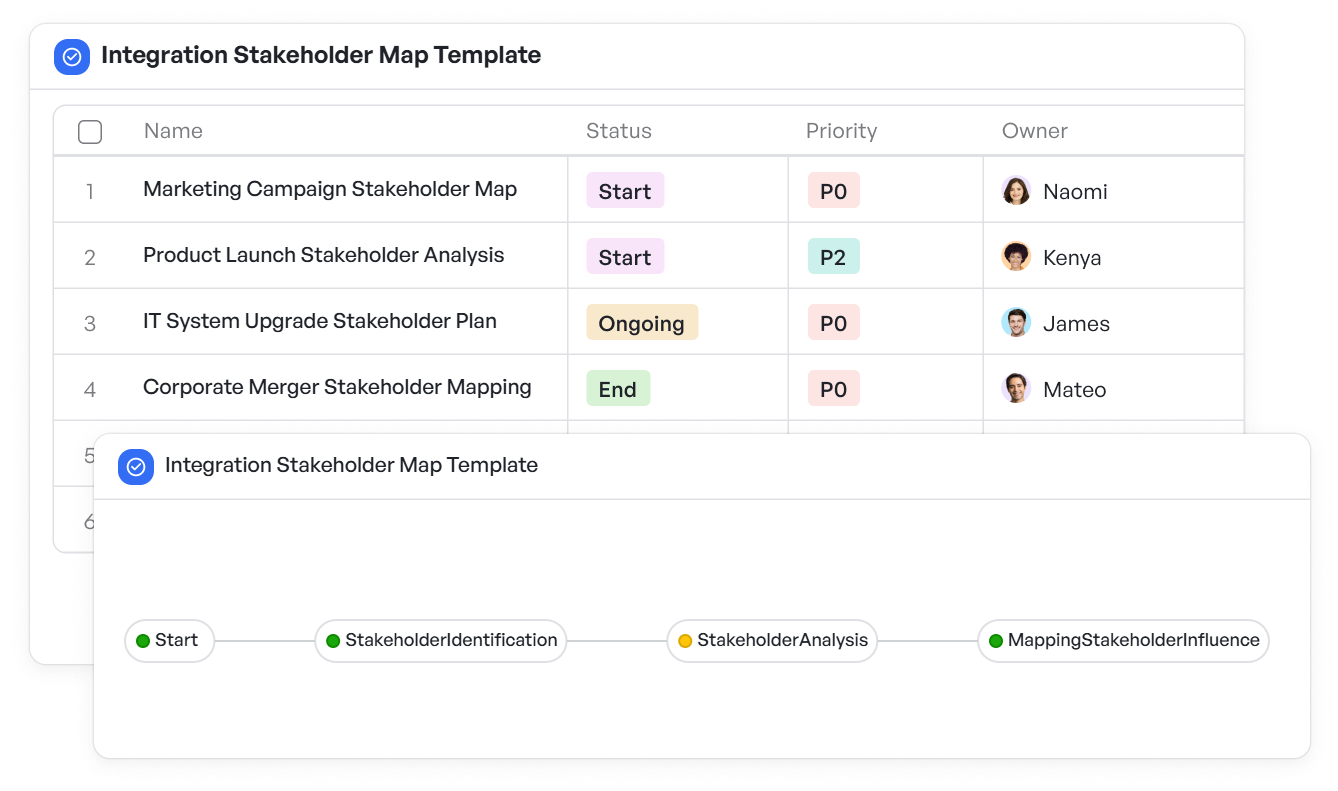 Meegle’s Integration Stakeholder Map template
Meegle’s Integration Stakeholder Map templateValidate feasibility (business, technical, operational)
Before greenlighting the project, pressure-test it on three fronts:
- Business feasibility – Do we have the appetite for the time, cost, and risk?
- Technical feasibility – Can our current stack or project team pull this off?
- Operational feasibility – Can the organization absorb the change?
To cover this properly, you can run business, technical, and operational feasibility scans using Meegle’s workflow engine. It supports visualized DAGs and dependency tracking, so you can map feasibility tasks and see what relies on them.
There are several free templates that you can use:
- Project Feasibility Cost Modeling template puts cost, benefit, and risk assessment into one dynamic project documentation.
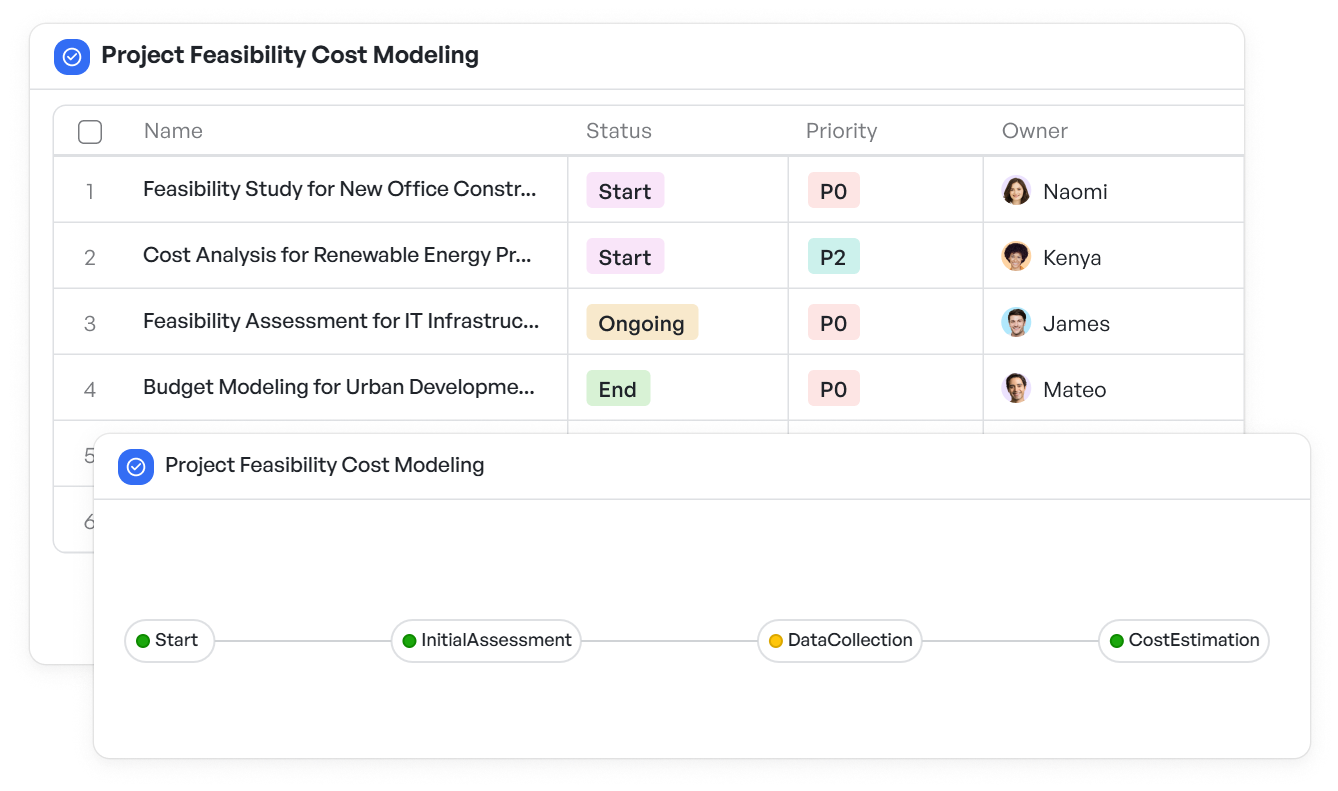 Meegle project feasibility cost template
Meegle project feasibility cost template- Technical Feasibility Assessment Matrix template guides you through stack compatibility, team skills, and technical risks.
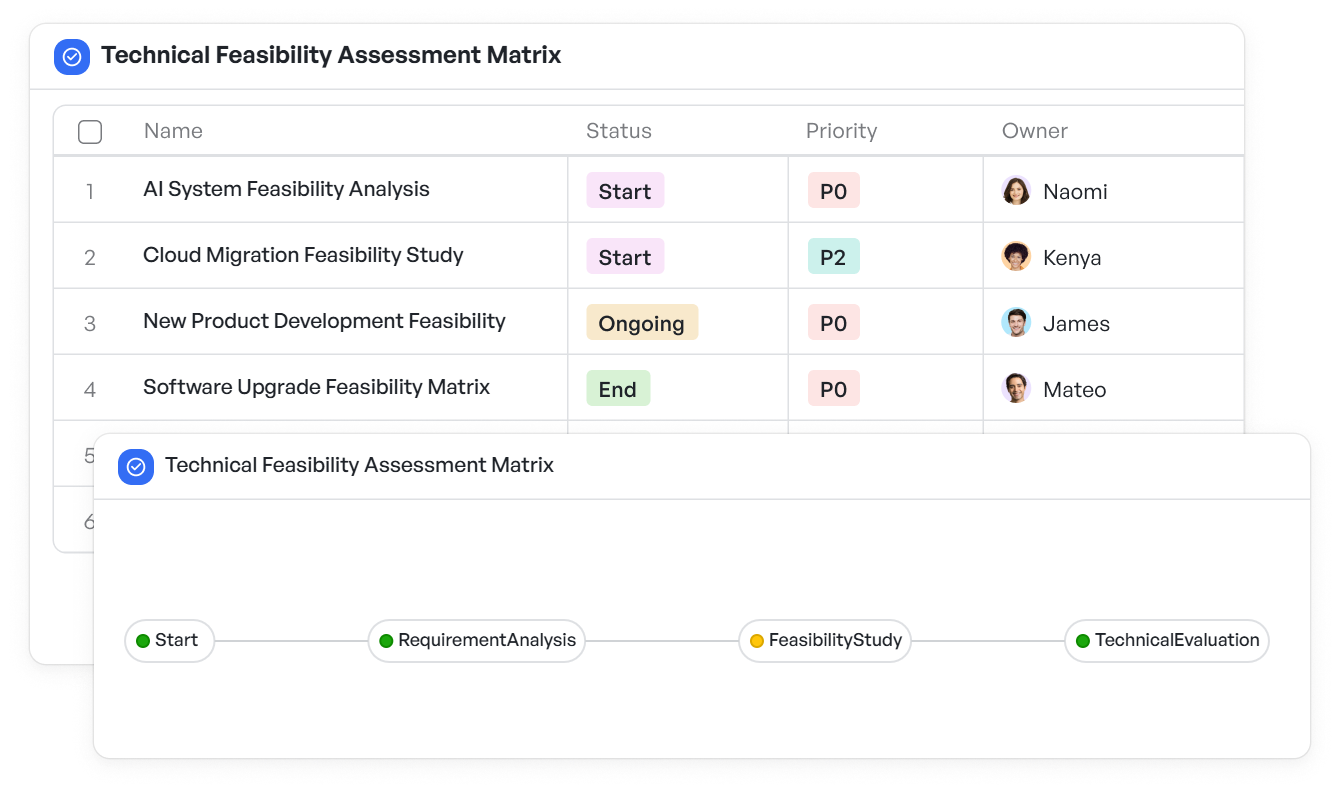 Meegle technical feasibility assessment matrix template
Meegle technical feasibility assessment matrix template- Process Automation Feasibility Assessment template**** designed to help operations managers collaborate with project managers. It helps in streamlining workflows and identifying areas that would benefit from automation.
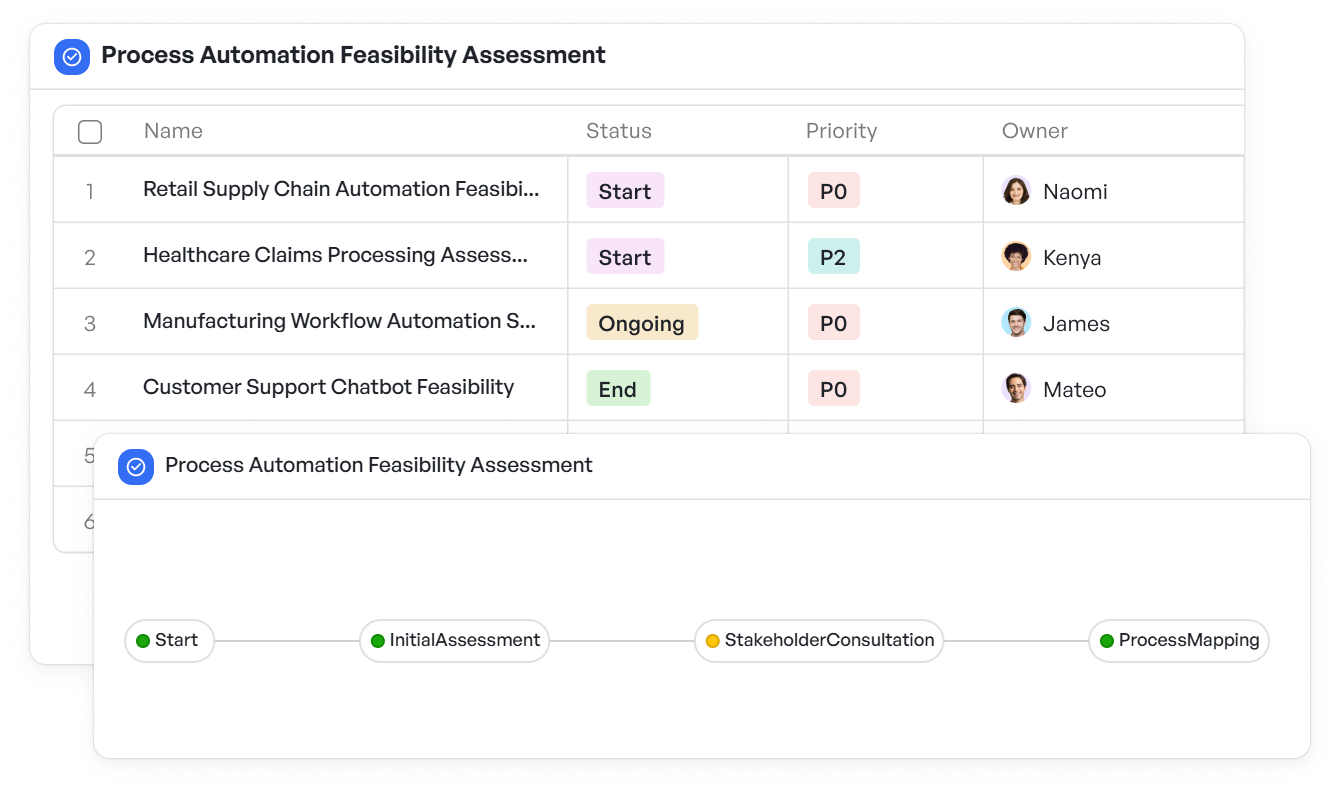 Meegle’s process automation feasibility assessment template
Meegle’s process automation feasibility assessment templatePro tip: Run a pre-mortem. Ask: “If this fails in 6 months, what went wrong?” Gather input anonymously from core project team and stakeholders.
Get buy-in from real stakeholders
Determine the key decision-makers and define the specific inputs they require to remain actively aligned throughout the project. Make sure to:
- Set expectation boundaries early (delivery scope, resourcing, involvement)
- Lock in availability for approvals at decision gates
- Secure time commitments for decision checkpoints
Watch out for red flags like sponsors who vanish after kickoff, undefined deliverables that spiral into scope creep, or PMs forced to chase sign-offs after the fact.
Pro tip: Put stakeholder expectations in writing, even if they are informal: 'We agree to review deliverables within 3 business days.' 'We will make a go/no-go call by [date].' This kind of clarity saves you later.
Suggested resource: Stakeholder Commitment Tracker
With Meegle, you can manage stakeholders by tagging them directly in comments on designated tasks or decisions using @mentions. When you assign a decision checkpoint, tagged individuals receive automated alerts and access to full task history and context.
 Add comments directly in project tasks
Add comments directly in project tasksProject phase 2: Planning (Design for reality)
According to a global study of 1,386 projects, dedicating about 25% of project effort to planning yields the highest success rate. Too little, and you fly blind. Too much, and you waste time solving problems that never materialize.
Break down the work
Start with the deliverables, not the tasks. Clearly define the required end-state of the project, along with all deliverables that must be reviewed, approved, or integrated. Then, reverse-engineer from those anchor points to:
- Break each deliverable into components using a Work Breakdown Structure (WBS)
- Map tasks in Gantt Charts or timeline views
- Define dependencies, durations, and priorities across the chain
Meegle’s WBS and Gantt Chart features are fully interactive. You can link tasks with dependencies, visualize effort, and assign them directly to team members with real-time updates.
Build the project roadmap
While time should be a factor in planning, equal attention must be given to the project’s trajectory and pacing.
Roadmaps should include:
- Milestones that indicate major review or decision points
- Buffers for known risk zones or resource constraints
- Phase gates for approval, QA, or integration
Pro tip: Add “gray zones” to your timeline (blocks where flexibility is expected). Label them as such. It gives you breathing room when one dependency pushes another.
Suggested read: 👉7 Product Roadmap Examples to Guide Your Strategy
Lock in resources, roles, and budget
You don’t have a real plan until people, money, and time are named, accounted for, and pressure-tested.
At this stage, your plan needs to prove three things:
- Every task has an accountable owner (not just a department)
- Every effort is backed by real resource availability
- The budget reflects true constraints, not placeholders or placeholders-for-placeholders
According to a study on project complexity correlation with cost and schedule overruns, a critical examination of 50 IT projects found that inadequate estimation during planning was a leading cause. When complexity increases and clarity doesn’t scale with it, the result is a delay by default.
Meegle gives you workload visibility and resource intelligence using:
- Real-time workload management: With its Workload Management Dashboard to check if someone’s overcommitted across overlapping timelines. You also get:
- Person-day (PD) level accuracy in scheduling
- Live calendar views of project team workloads
- Person-day (PD) level accuracy in scheduling
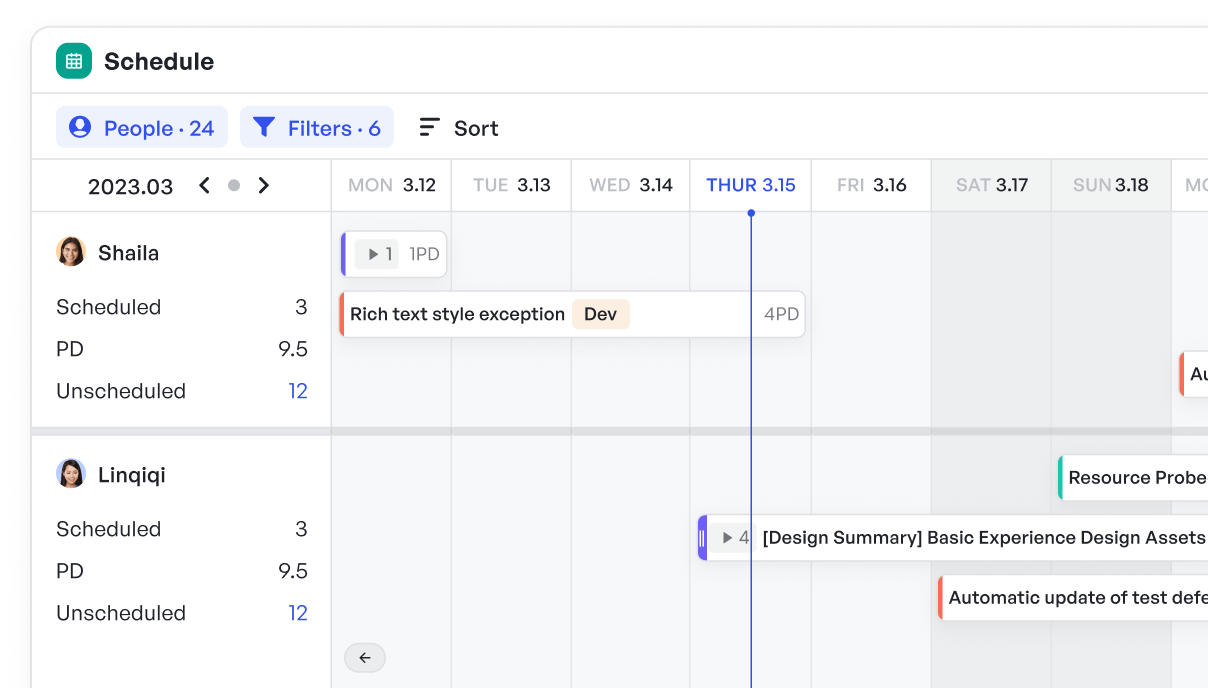 Meegle project schedule management
Meegle project schedule management- Resourcing heatmaps: With this, you can model impact before assigning, so you don’t burn your top contributors across multiple timelines.
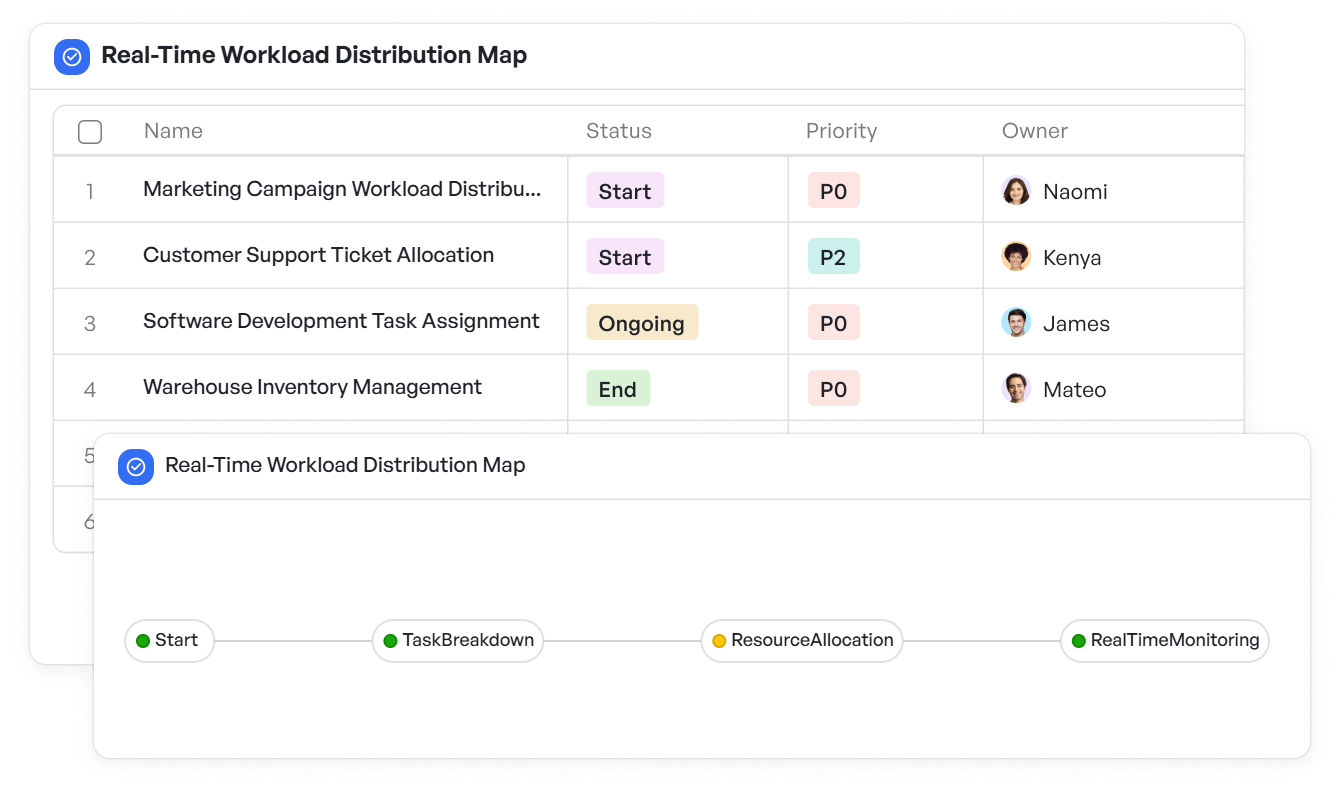 Meegle real-time workload distribution map template
Meegle real-time workload distribution map template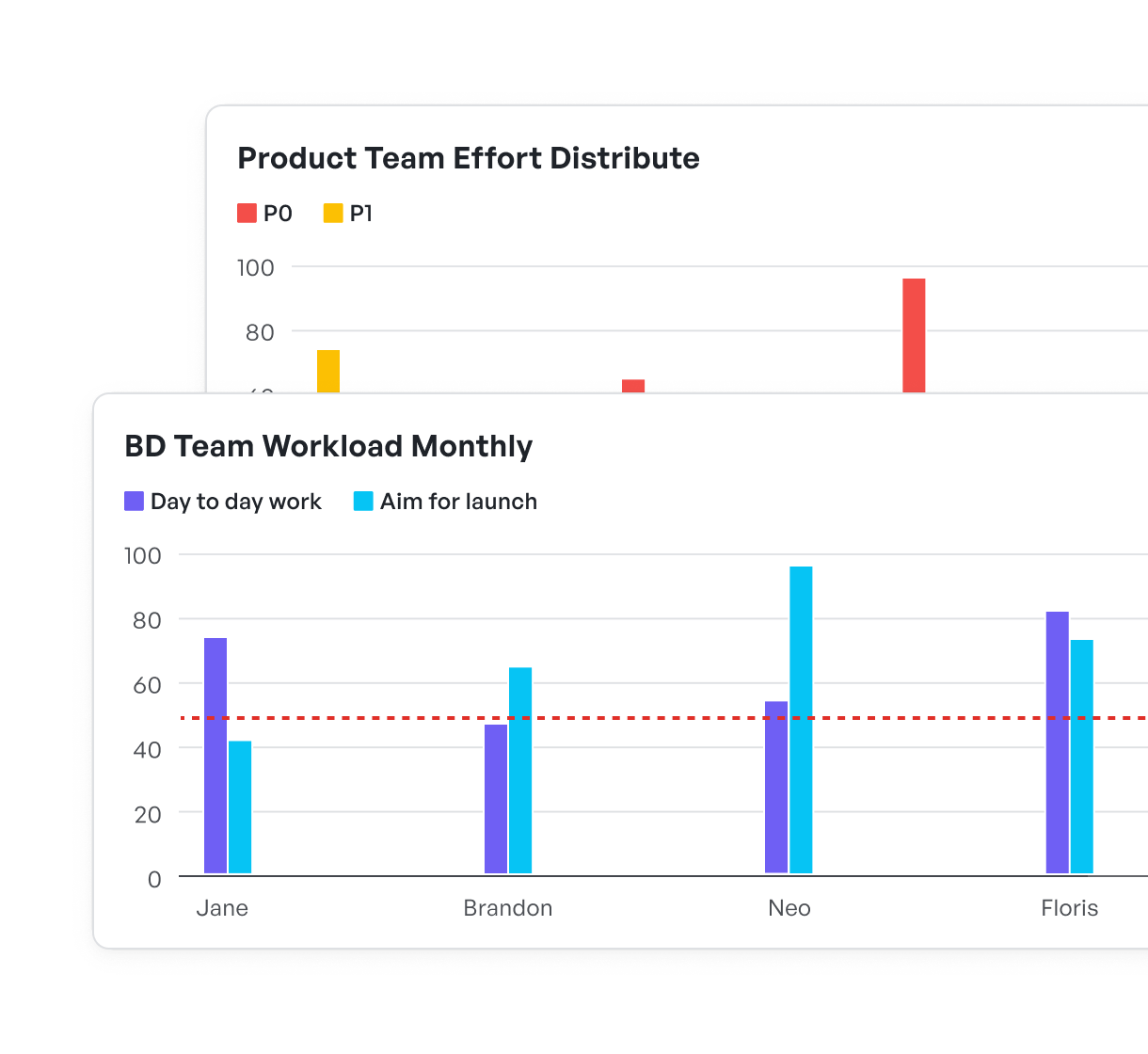 Data spread for workload distribution across team members on Meegle
Data spread for workload distribution across team members on Meegle- Customizable views and planning templates: Meegle supports multiple view modes (Table, Tree, Kanban, Gantt) so you can visualize tasks and workflows in the format that suits your team’s planning rhythm.
Suggested read: 👉Best Workflow Management Software
Anticipate project risks
You need to surface uncertainties, assess their impact, and build early detection mechanisms so surprises won’t derail your priorities.
Once risks are ranked, choose a response strategy to better manage them:
- Avoid – Change the plan to eliminate the risk altogether
- Transfer – Shift the burden to a third party (e.g., insurance, vendor contracts)
- Mitigate – Reduce the likelihood or impact through proactive controls
- Accept – Acknowledge the risk and prepare a contingency response
Pro tip: Run a red team session. Ask a separate person/team to try to break your plan. Encourage sabotage in a controlled environment. It helps harden your strategy.
Using Meegle, project managers can convert risks into discrete mitigation tasks, assign them, and link them to automation. For example, if Server Latency risk spikes, Meegle triggers a task: “Run latency diagnostics,” assigned to Ops.
Document everything, keep it adaptable
Your documents should carry forward context, surface assumptions, and stay flexible enough to evolve without losing traceability.
Core planning records you need:
- Master project plan – The blueprint that links deliverables, dependencies, and owners
- Risk register – Not just a list, but a monitored set of dynamic risks and mitigation tasks
- Schedule baseline– Your committed timeline, against which slippage is measured
- Budget baseline – The cost model locked for performance tracking
- Communication plan – Who needs what info, when, and how (meetings are not a plan).
Common pitfalls found in the planning phase
| Mistake | Consequence | Fix |
|---|---|---|
| Planning based on optimism | Schedule slips, team burnout | Use historical velocity or reference project benchmarks to set realistic durations |
| No task ownership | Bottlenecks, blame loops | Assign real people, not roles or departments, to every task |
| Ignoring cross-project dependencies | Resource clashes, timeline collisions | Use a portfolio or timeline view to see overlaps across projects |
| No change control process | Scope creep, confusion, and team fatigue | Create a change log from day one. Tie changes to formal approvals and visible deltas |
Phase 3: Execution (build, ship, and adjust)
This is where your project’s momentum gets tested on activating the system you planned and monitoring how real-world conditions deviate from the roadmap.
Activate workflows and assign ownership
To avoid delays, handoffs, or silent failures, project leads need to enforce one simple rule: nothing moves until ownership is named, sequence is clear, and timing is real.
Here’s what that looks like in execution:
- Tie critical output to one accountable team member who owns delivery and not just contributes.
- Break down your deliverables into executable tasks and immediately route them into team-specific queues.
- Task relationships (what comes first, what’s blocked) and key deadlines must be visible and dynamic. When Task A is delayed, Task B should react automatically.
Meegle automatically triggers workflows when a project phase begins. Tasks are assigned instantly, deadlines set, dependencies locked, all mapped to your Gantt structure. You move from theory to throughput without manual handoff.
Enable real-time collaboration without micromanaging
Best practices here include:
- Hosting async standups using comment threads or task checklists
- Centralizing communication around tasks
- Using threaded comments for decisions and blockers to keep history visible
Tasks in Meegle update in real time. Status changes, file uploads, and comments are auto-logged and synced across views so PMs don’t have to ask for updates.
Automate as much as possible
The goal is to build an execution engine that self-monitors and self-triggers based on defined logic.
Set up automations to:
- Auto-assign new tasks when a predecessor is marked “done”
- Notify stakeholders when milestones are reached or missed
- Escalate blocked tasks after a set idle period
Meegle’s no-code automation builder lets you create and configure settings like:
- Due date alerts: Automatically notify task owners and relevant groups one day before a task's estimated completion date, ensuring deadlines are met.
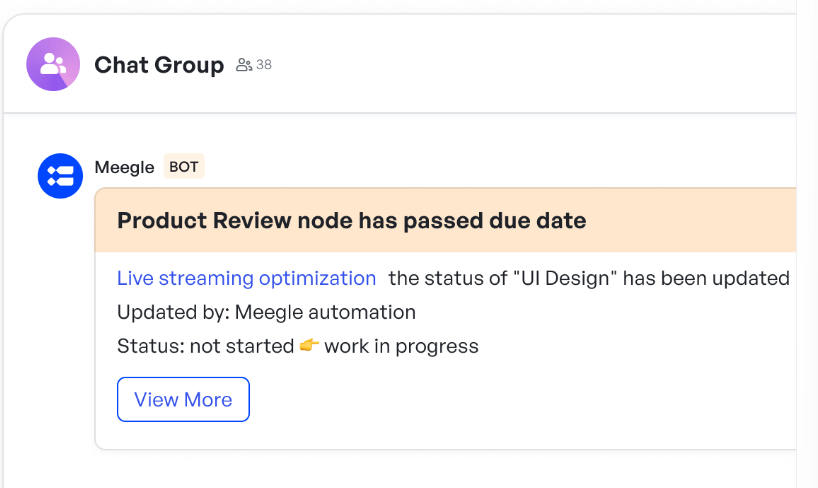 Automated alerts
Automated alerts- Automatic node rollback: If a product fails its demo review, the system can revert the task to a previous stage and trigger a second review, streamlining the revision process.
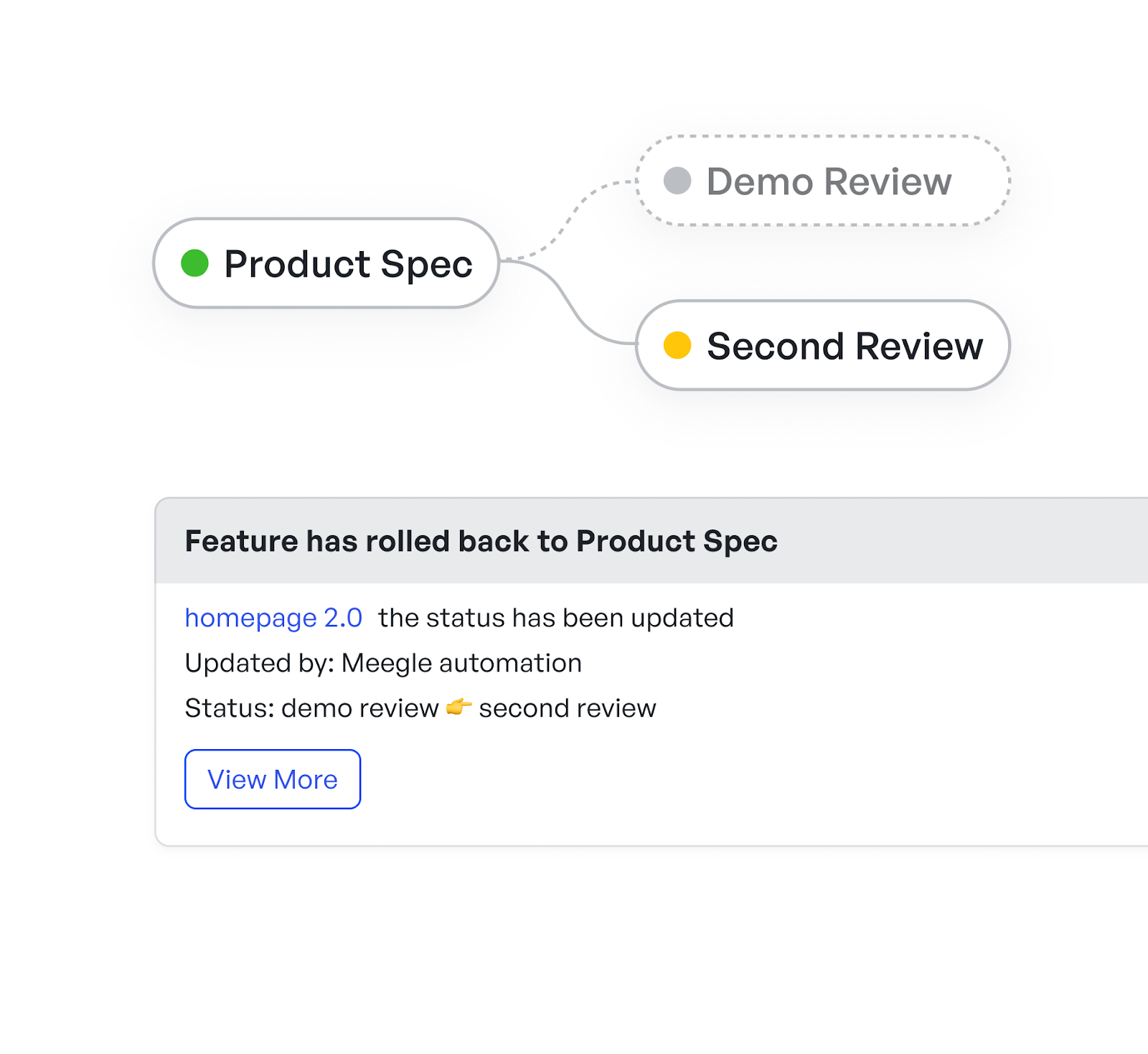 Meegle automated rollbacks
Meegle automated rollbacks- Zapier integration: Connect Meegle with over 8,000 apps via Zapier to automate workflows across platforms. For example, you can automatically create Meegle tasks from new entries in Google Sheets.
 Google Sheets and Meegle’s automation via Zapier (Source: Zapier)
Google Sheets and Meegle’s automation via Zapier (Source: Zapier)Track execution velocity
You need to know not only what’s being done, but how predictably and where it’s slowing down. Some metrics you can track include:
- Task completion rate vs. planned rate
- Missed milestones (and reasons)
- % of tasks “in review” or “blocked”
- Average time-in-progress by task type
Suggested read: 👉Project Management KPIs and How to Track Them
Project phase 4: Monitoring and control
This phase runs in parallel to execution and acts as a real-time risk space for mitigation and schedule hygiene.
Use milestones as control gates
At every milestone, run a quick integrity check:
- Scope review – Has the scope quietly drifted without documentation?
- Risk reassessment – Are any low-risk assumptions now trending high?
- Budget check – Are costs tracking within the baseline, or are buffers burning?
- Stakeholder feedback – Is buy-in holding, or are approvals starting to lag?
Manage risks as live entities
Risks change shape as execution unfolds, and your tracking should reflect that. Steps to take for this include:
- Updating your risk probability and impact – Don’t wait until review cycles. Flag shifting risks early.
- Linking mitigation actions to real tasks – Every major risk should have an assigned owner and an operational plan.
- Escalating when thresholds are hit – For example, when a high-impact/high-probability risk is active with no mitigation underway, trigger a response automatically.
Project phase 5: Closure
Tie it off completely. The project may be functionally done, but if you don’t close it right, you risk operational loose ends that linger far beyond the last task.
Finalize deliverables, sign-offs, and ownership
Before you shut down the project workspace or reassign team members, make sure three things are true:
- Every deliverable is delivered in the format and condition agreed upon.
- Stakeholders have signed off formally
- Ownership has transitioned—internal project teams like Ops, IT, or Support are aware, ready, and equipped to take over.
Document the wins, the gaps, and the truth
Don’t treat retrospectives as an afterthought, as you’ve already paid the cost of mistakes, now take advantage of the lessons learned throughout the project’s lifecycle.
Run a post-project review to answer:
- What worked, and why? (Codify that.)
- What fell apart? When did the first signs show?
- What tools or workflows helped or dragged us down?
- Which assumptions didn’t hold up?
- What would we do differently, immediately, if we had to run this back next quarter?
Types of project management lifecycle
The way you move through the phases of the project’s lifecycle can look very different depending on the project management methodology. Each one offers trade-offs in predictability, flexibility, and speed.
And according to Wellingtone’s The State of Project Management 2024 report, 42% of PMs without a defined methodology report their projects are 15% less likely to meet goals and stay on budget.
1. Agile (iterative-incremental lifecycle)
Structure: Work is broken into short, iterative cycles (sprints). Planning, execution, and review happen repeatedly.
Best for: Software development, R&D, evolving product scope.
Strength: High adaptability and rapid feedback.
Risk: Can lose cohesion if poorly scoped or under-managed.
Suggested Read: 👉What is Agile Project Management?
2. Waterfall (linear lifecycle)
Structure: Phases are completed sequentially with no overlap or iteration. Once a phase is closed, you don’t go back.
Best for: Regulated industries, construction, manufacturing, or fixed-scope initiatives.
Strength: High predictability.
Risk: Low flexibility and changes late in the process are expensive and messy.
3. Hybrid lifecycle
Structure: Combines Waterfall for fixed components (e.g., infrastructure) and Agile for flexible components (e.g., features, UI).
Best for: Large-scale programs with both stable and evolving components.
Strength: Balance between control and flexibility.
Risk: Needs careful coordination between both tracks.
4. Kanban (flow-based lifecycle)
Structure: Work items flow continuously through defined stages on a Kanban board. No fixed sprints.
Best for: Operational work, support teams, continuous delivery environments.
Strength: Visual transparency, ongoing prioritization.
Risk: Requires strong WIP (work-in-progress) discipline to avoid overload.
5. Iterative lifecycle
Structure: A basic version is built early, then improved through iterations.
Best for: When the full solution isn’t clear at the start, but can be shaped through repeated refinement.
Strength: Helps evolve complex systems over time.
Risk: Can stall if iterations never converge on a stable release.
6. Lean
Structure: Prioritizes customer value, waste reduction, and continuous improvement. Often overlaps with Agile.
Best for: High-efficiency, low-waste environments like manufacturing or product ops.
Strength: Focus on efficiency and learning.
Risk: Demands cultural buy-in and deep process clarity.
Best practices to manage project lifecycle
Managing a project lifecycle is about preventing deviation. Here are tips on how to do that:
Design for drift because you won’t stay on plan
You can’t eliminate uncertainty, but you can buffer against it. Build in flexible buffers around volatile zones, places where you know things might shift, like new vendor integrations or complex internal reviews. Fixed deadlines are fine for optics, but inside the system, you need breathable space that absorbs impact without forcing rework.
Build context memory into your tooling
If your tools don’t preserve context, you’ll find yourself re-explaining decisions, retracing past blockers, and rediscovering assumptions the hard way. Every task should carry a traceable why.
Treat transitions as the highest-risk events
What one team thinks they’ve delivered isn’t always what the next team thinks they’ve received. To avoid that, treat transitions like audits. Run handoff drills: ask the receiving team what they expect, then compare that to what’s actually in the handover.
Make change requests cost visible
Any time the scope shifts or requirements evolve, the first question should be: What’s the cost? Not just financially, but in time, resources, and delivery risk. Every change request should come with a visible impact delta. What timeline is affected? What dependencies will need to shift? What does this change do to the original assumptions captured in the charter?
Meegle offers integrated change management workflows that guide every request through submission, evaluation, approval, and implementation. To move faster without sacrificing control, Meegle also provides pre-built change management templates tailored for specific industries and change types:
- Digital thread change management – For aerospace and manufacturing, where traceability and compliance across product lifecycles are critical View template →
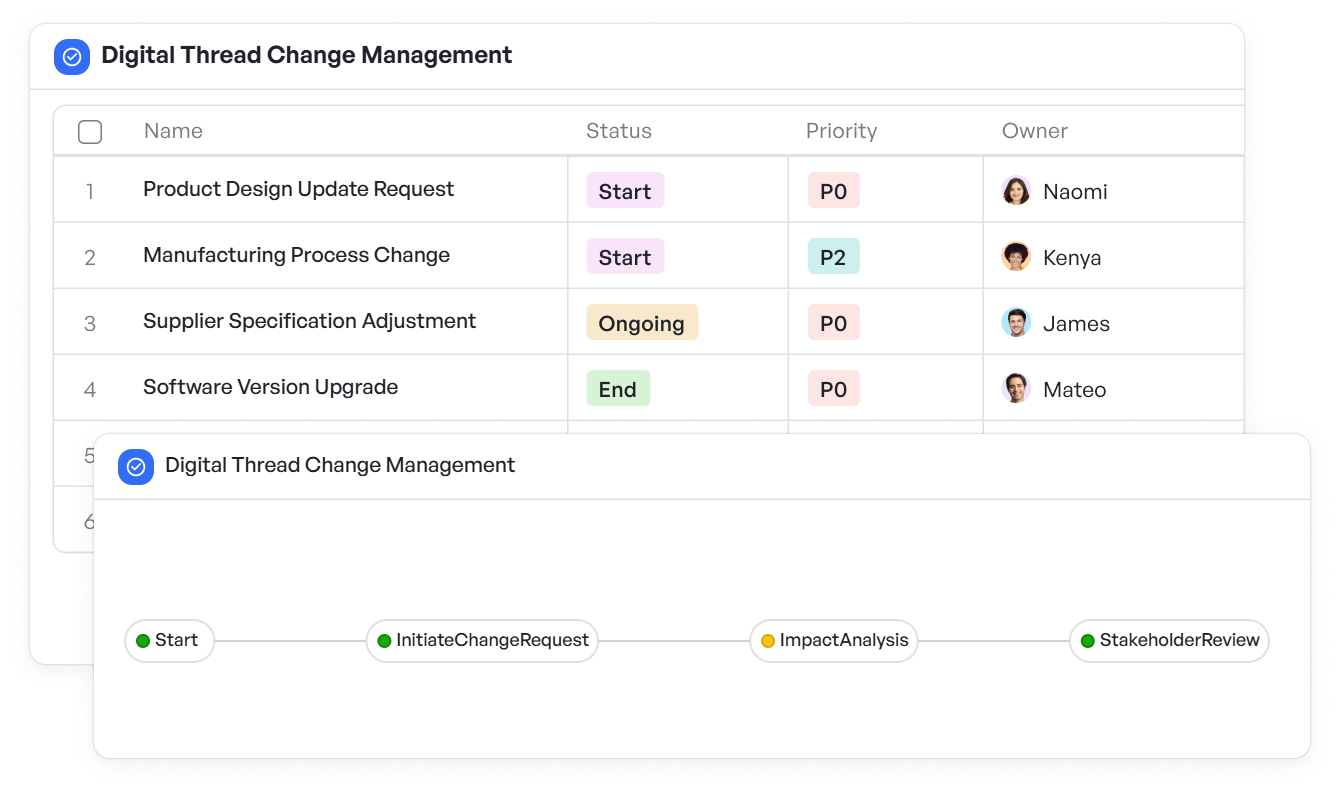 Digital thread change management template
Digital thread change management template- Turnkey change order management – Built for construction and turnkey projects to streamline change documentation and formal order approvals. View template →
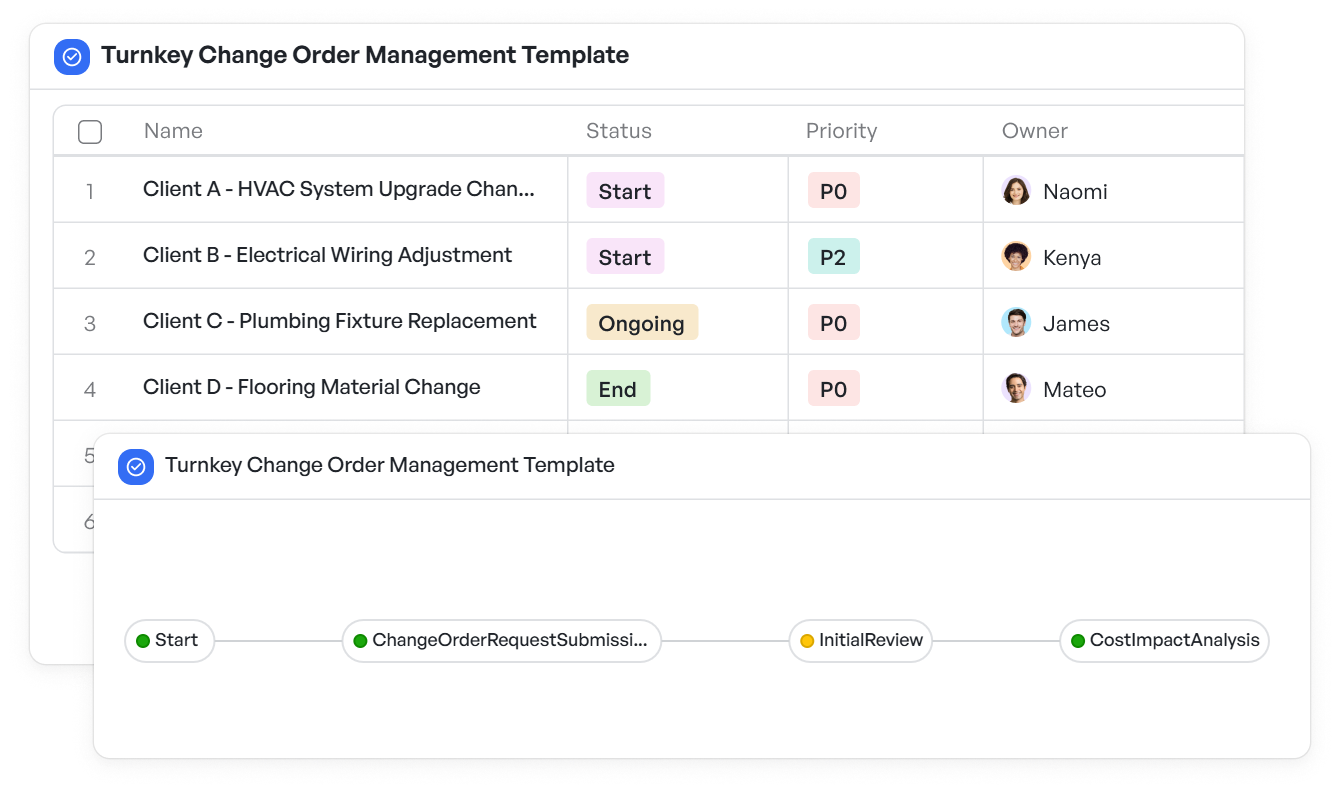 Turnkey change order management template
Turnkey change order management template- IT service change management workflow – Manages changes in service environments to avoid disruptions and maintain quality. View template →
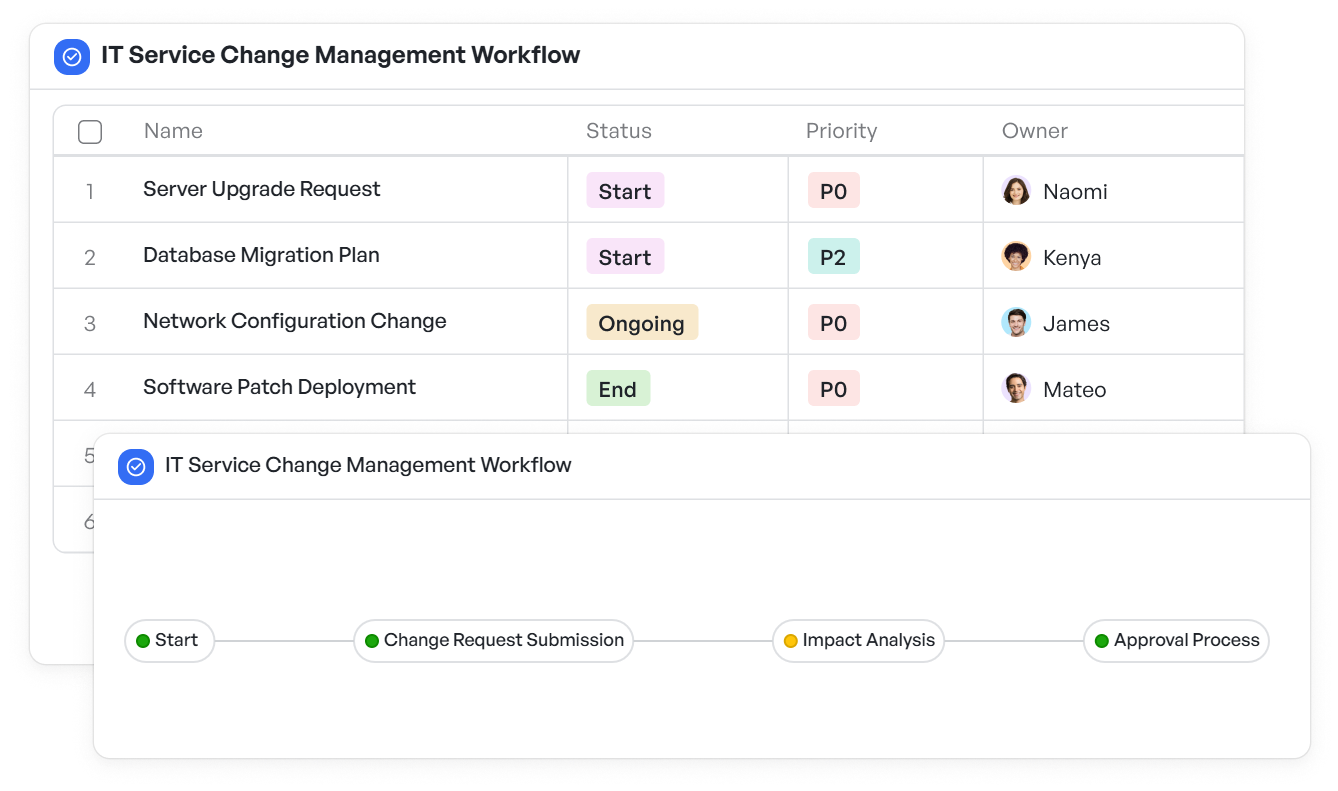 IT service change management template
IT service change management template- Lean change management template – Incorporates lean principles to facilitate agile and efficient change processes within organizations.
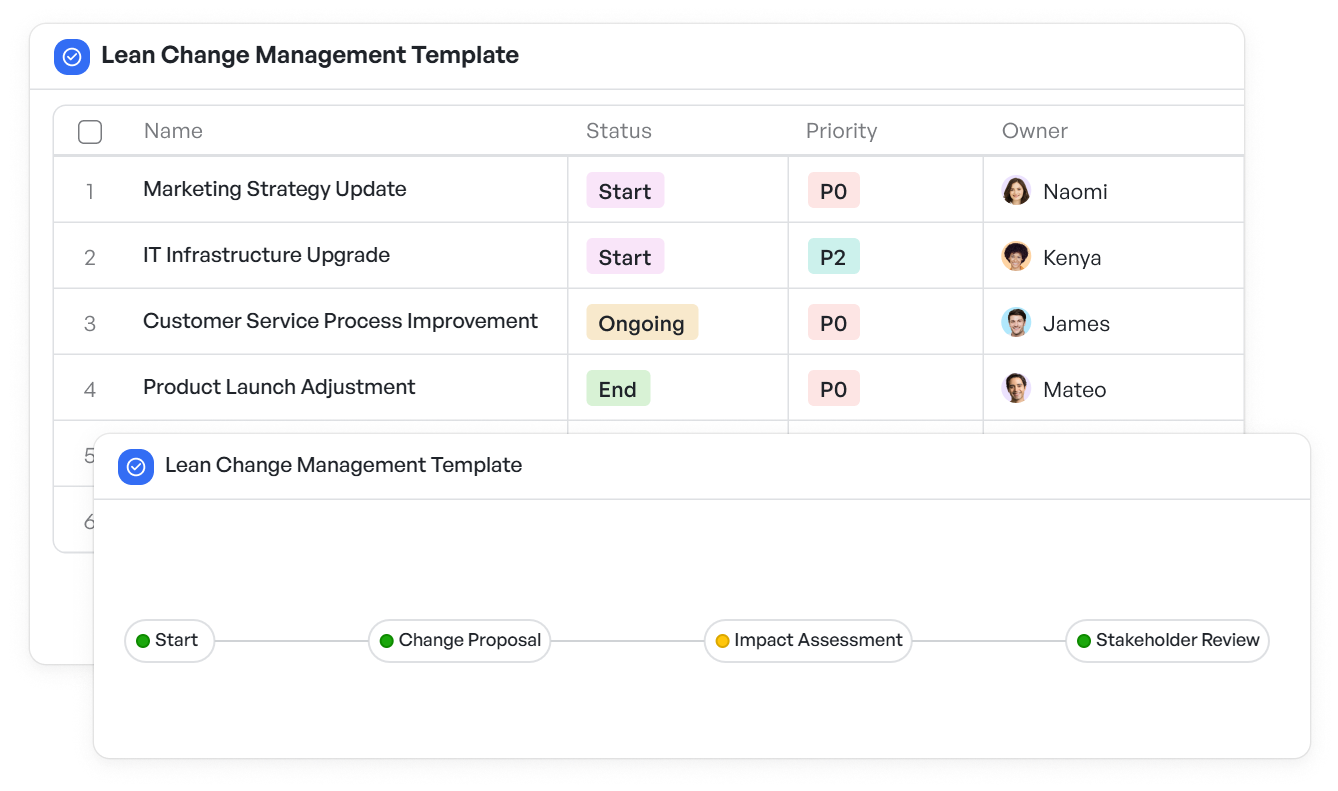 Lean change management template
Lean change management templateUse retrospectives to tune the lifecycle itself
Once in a while, zoom out. Run a meta-retrospective focused not on what the team delivered, but how the lifecycle itself performed. Document what you’ve learned, what you’ve adjusted, and what you’re now standardizing. Feed that insight into the next cycle, and make it visible to your team.
What makes it challenging to manage project lifecycle phases is maintaining the structure while everything around it is in flux. Meegle centralizes every phase into a single, versioned environment where planning, execution, and change control stay connected.
Plan, execute, and deliver—experience full lifecycle control with Meegle.
FAQs
What are the 5 stages of the project life cycle?
Initiation, Planning, Execution, Monitoring and Control, and Closure are the stages that structure a project from start to finish.
What are the 7 types of project life cycles?
Common types include Waterfall, Agile, Hybrid, Iterative, Kanban, Lean, and Spiral. Each offers a distinct approach to managing phases, tailored to project complexity, flexibility needs, and delivery speed.
What is the PM life cycle?
The project management life cycle is the structured sequence of phases that guides a project from conception to completion, helping teams plan, execute, and adapt work efficiently.
What are the 4 project life cycles?
Waterfall, Agile, Iterative, and Hybrid are the four most widely used project life cycles. They differ in how they handle structure, flexibility, and stakeholder involvement throughout the project.
The world’s #1 visualized project management tool
Powered by the next gen visual workflow engineRead More
Check All BlogsStart creating impactful work today



